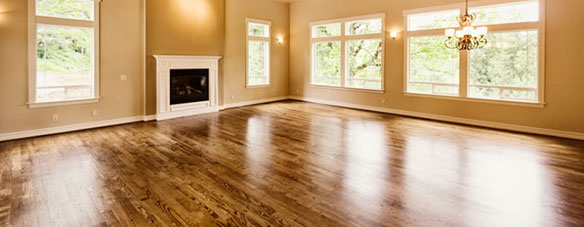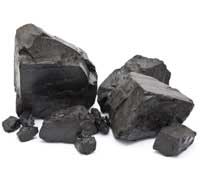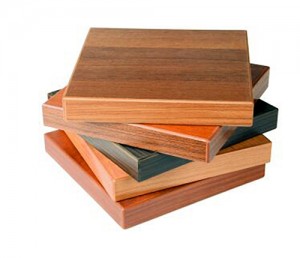Hardwood Flooring’s Impact on Natural Resource Depletion: Part One
 “Increasing wood fuel use, a carbon-neutral process, would lower the environmental impact of hardwood lumber manufacturing and increase its use as a green building material.” (i)
“Increasing wood fuel use, a carbon-neutral process, would lower the environmental impact of hardwood lumber manufacturing and increase its use as a green building material.” (i)
With increased interest in the building industry in sustainable practices and environmental impact, the process and energy costs of producing hardwood flooring need to be examined. Every wood products manufacturing process has its price in both resource and energy costs. For hardwood lumber, the green lumber is dried usually in conventional-type dry kilns. The heat sources used in these kilns are wood and fossil fuels. The majority of the hardwood lumber dried in the US uses wood from the milling process as the primary fuel source.
A study published in Wood and Fiber Science in July of 2008, titled “Environmental Impact of Producing Hardwood Lumber Using Life-Cycle Inventory,” reported that wood has two significant advantages over non-wood substitutes: Wood is carbon neutral and carbon can be sequestered. Therefore, using wood as a fuel or in a finished wood product from hardwood lumber could be considered a sustainable practice. Other non-wood products do not have the benefits of a carbon-neutral product to use both as a fuel and a finished product. (ii)
Summary of Green Building Research
While keeping in mind that energy use varies by region, wood species and fuels used in production, the goal of the study was to arrive at the most definitive carbon footprint for hardwood flooring.
Here are some relevant results of the study: (iii)
- Sawing consumes the highest proportion of electricity in hardwood manufacturing. Thus, installing optimization equipment would lower electrical consumption by reducing errors during the sawing process. Thinner saws reduce electrical consumption and reduce the volume of green wood residue produced.
- Drying consumes the highest proportion of fuel. In this study, wood fuel accounted for 87% of the thermal energy used. Lowering overall energy consumption by upgrading or overhauling existing older and inefficient dry kiln facilities is indicated. Increasing on-site wood fuel consumption would reduce fossil greenhouse gasses but increase other products, such as particulate emissions. Particulate emissions may be reduced by re-injecting fly ash.

- The region of production affects the environmental impact of this product; coal is the largest off-site material used for electrical power generation in the Northeast. Most power in the Pacific Northwest is produced from water and then natural gas, while most power in the Southeast is produced from coal and uranium, just like the Northeast.
- Increasing the level of air drying lumber and percentage of air drying prior to kiln drying, especially for species where color is not a problem, would lower the amount of energy required for the drying process. Therefore, improving air drying methods would lower energy use while maintaining lumber quality and reducing the environmental impact of hardwood lumber.
The Wood Itself
Increasingly, flooring stakeholders are questioning the risks and rewards of using regular hardwood, engineered wood or bamboo flooring products. Different species are beginning to make a presence in the eco-flooring market as well. However, really, the simplest answer is: All flooring options available for purchase contain very different performance properties due to the structural features of the materials and how they are produced.
Every natural wood species on Earth has specific properties which can be traced to the very cellular structure of every tree. Although this may seem daunting, it just requires that homeowners and builders inform themselves of the species-specific properties prior to purchasing and installing hardwood floors.
Engineered wood flooring combines 3-12 multiple ply layers that are cross layered, glued and pressed together. The inner core layers are usually either a hardwood or softwood plywood-type of material. The top surface is usually a thicker hardwood veneer wear layer, which is available in almost any wood species. The top layer is glued and pressed on the top surface of the core layers. The process works, and so does the end result. However, even though engineered wood flooring is more resistant to higher moisture levels than traditional solid wood flooring, moisture content (MC) measurement is still important.
combines 3-12 multiple ply layers that are cross layered, glued and pressed together. The inner core layers are usually either a hardwood or softwood plywood-type of material. The top surface is usually a thicker hardwood veneer wear layer, which is available in almost any wood species. The top layer is glued and pressed on the top surface of the core layers. The process works, and so does the end result. However, even though engineered wood flooring is more resistant to higher moisture levels than traditional solid wood flooring, moisture content (MC) measurement is still important.
A bamboo is a form of grass which is very different in terms of strength and performance properties than that of traditional solid wood flooring. Its cell structure differs from wood, and bamboo flooring strength depends on how it was harvested and how it was manufactured. Unlike hardwood flooring, there are no official guidelines or manufacturing standards for bamboo flooring. As such, MC measurement can be difficult due to this lack of standards, but it is still critical because bamboo flooring is still susceptible to moisture-related problems if not installed at the correct MC levels.

Free Download – Wood Flooring Installation: What To Expect
Moisture Content (MC) & Longevity
Ultimately, conservation and limiting environmental impact in forestry-related products are ensuring that hardwood that has been processed for flooring or other building uses is maintained to achieve its maximum service life.
Hardwood flooring achieves its optimum longevity when its MC is well-managed both before and after installing the hardwood floors. As the relative humidity (RH) of the surrounding air fluctuates, so too does the MC of the wood flooring. This is a very natural dynamic process, but excessive MC in the hardwood flooring can cause future problems.
Using a wood moisture meter is the best way to measure and assess MC. Users can purchase meters that are programmable and can program the wood species directly into the meter so that its MC reading truly reflects the actual MC of the flooring.
With today’s pinless wood moisture meter technology, the modern wood moisture meter can measure the flooring’s MC up to ¾” below the wood surface without doing any damage to a new or existing floor. Put simply, a wood moisture meter is a proactive tool for protecting hardwood flooring and guaranteeing that the flooring has a long service life once installed.
In terms of environmental impact, well-maintained and properly installed, hardwood flooring can last for many years to come. Hardwood flooring is an option with enormous ecological future returns on investments.
Additional Reading:
Hardwood Flooring and Natural Resource Depletion: Part Two
[i] Bowe, Scott A. and Richard D. Bergman “Environmental Impact of Producing Hardwood Lumber Using Life-Cycle Inventory.” Wood and Fiber Science: 40(3), pg. 448 Abstract Monona, WI: The Society of Wood Science and Technology (SWST), 2008.
[ii] Ibid (pg. 456).
[iii] Ibid (pg. 457).
Troy Edwards is Technical Service Supervisor for Wagner Meters, Inc., where he oversees manufacturing, quality control and IT service for their electronic measurement products for the building and construction industry. Troy holds an AAS in Electronics Technology and has over 20 years’ experience in various electronic manufacturing and production positions.
Related Posts via Taxonomies
Last updated on August 13th, 2021



